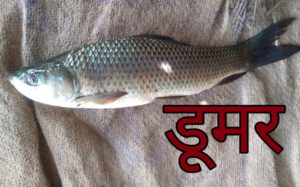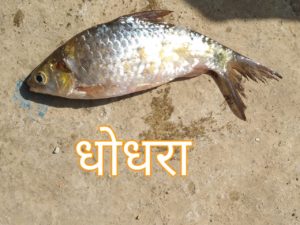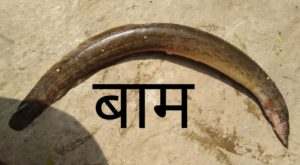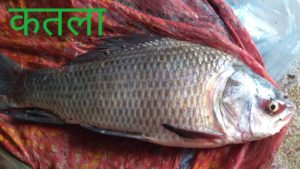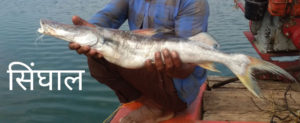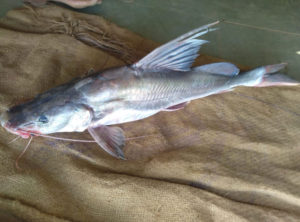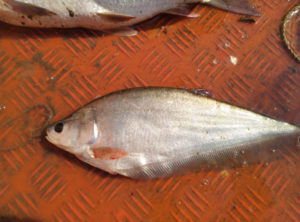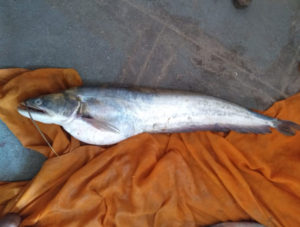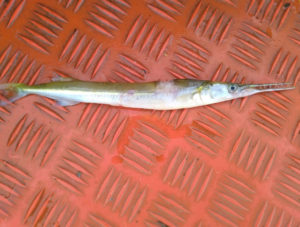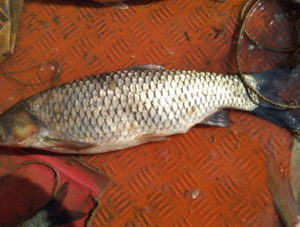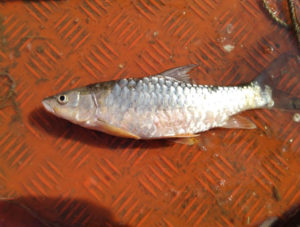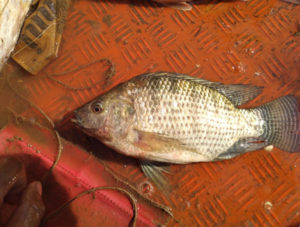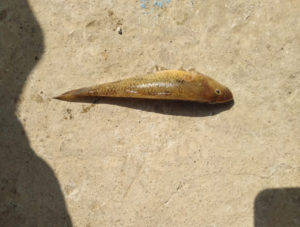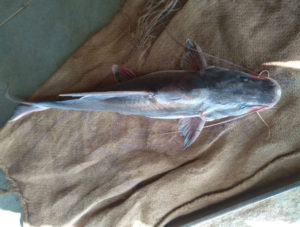The Narmada River, like any other free flowing river, is home to a rich and diverse variety of fish and other flora and fauna. The Narmada Valley Development Plan with 30 large dams, 135 medium dams and 3000 small dams presents an unprecedented threat to the fish inhabiting the Narmada and its tributaries.

The estuary of the Narmada at the Gulf of Khambhat in Gujarat is also one of the best habitats for fishes, particularly the Hilsa, the Jumbo River Prawn, the Labeo, etc. The construction of the Sardar Sarovar Dam, the formation of the reservoir in the upstream of the dam and the reduction of the flow in the downstream of the dam has drastically reduced the fish population in the Narmada. A study by the Central Inland Fisheries Research Institute (CIFRI) in Vadodara and Kolkata as reported in the Times of India dated 22 February 2018, states that in less than a decade, the reduction in Hilsa catch alone is over 90%, down from 5,180 metric tonnes in 2006-07 to a mere 419 metric tonnes in 2015.
In its discussion of the downstream impacts of the dam, the World Bank commissioned Independent Review of the Sardar Sarovar Project, ( the Morse Commission) in its report released in 1992 had warned that:
Proceeding without proper information will most certainly result in long series of crises which will have to be dealt with one after the other…Changes in the downstream fish habitat may have complex social and economic effects on numerous river communities, and relocation of these people would need to be addressed.
(Page 293)
Unfortunately, the government has not looked at any of the impacts the dams have had on fish and fishing communities. Thousands of fishing families have been adversely affected due to the Sardar Sarovar Dam alone. Many more fishing families have lost their livelihood because of the other dams on the River Narmada. The struggle of the fisher people over reservoir fishing at one of the dams, the Bargi dam, is well known and well documented.
While there have been many instances around the world where dams have been decommissioned because of their adverse impact on ecology and in order to restore the indigenous variety of fish, no detailed studies are available on the impacts that the many dams on the Narmada would have on its fish population. As many of the dams are already completed, the impacts have been devastating and permanent.
Considering this, it is important to compile a list of fish that were once abundantly available in the Narmada when the river was flowing freely and without obstruction. Therefore, with the help of senior members from the fishing community, Jitendra Manjhi (Kevat), village Bijasan and Mangat Verma, village Lepa, an attempt is made here to compile a list of fish which were available in the free flowing Narmada . The photographs here have been taken by Jitendra Kevat. Members of Manthan Adhyayan Kendra, namely Rehmat and Dilip Zilve have also helped greatly in putting this compilation together.
This is not an exhaustive list and continues to be a work in progress. Moreover, this information is only of the fish found upstream of the Sardar Sarovar Dam. It does not have information of fish found in the estuary in Gujarat where the impact is particularly severe. It also does not have information from the upper reaches of the Narmada. The information here will be updated as and when more information becomes available.
To know of the impact the Sardar Sarovar Dam has left on fresh water fish and fisher people, listen to the short video clip: https://youtu.be/4t4QS5z-JVk?si=qI5Guh_RM7cAp0xU
Fish in the River Narmada ( नर्मदा में पाई जाने वाली मछलियाँ )
| No. | Local Names of Fish (मछली का नाम) | English Translation of Local Names (नाम का अंग्रेज़ी अनुवाद) |
| 1. | बाड़स | Badas |
| 2. | आलिया (छोटी) | Aliya (small) |
| 3. | ऊपर आँख वाली | With eyes at top |
| 4. | ऊपर डोली | Top eye ball |
| 5. | कतला | Katla |
| 6. | कनवर | Kanvar |
| 7. | कलवट | Kalvat |
| 8. | कांग्सी | Kangsi |
| 9. | कुमरा (सिंघाल) | Kumar |
| 10. | केकड़ा | Kekda |
| 11. | कॉमन कॉर्प | Common Korp |
| 12. | खट्टिया | Khatiya |
| 13. | खरिया | Khariya |
| 14. | गुंगाला | Gungla |
| 15. | गुरगुच (छोटी) | Gurguch (small) |
| 16. | गेगरा | Gegra |
| 17. | गोली (छोटी) | Goli |
| 18. | घार्स कार्प | Dhars Karp |
| 19. | चालर (छोटी) | Chalar |
| 20. | चिकली बाम (छोटी) | Chikli Bam (small) |
| 21. | झिवरिया | Zivariya |
| 22. | डूमर | Dumar |
| 23. | डोक | Dok |
| 24. | तितरिया (छोटी) | Titariya |
| 25. | दोदड़ी | Doddadi |
| 26. | धावड़ी झिंगा | Dhavdi |
| 27. | धोधरा (छोटी) | Dhodhara |
| 28. | नलन | Nalan |
| 29. | पारण | Paran |
| 30. | पार्वती (छोटी) | Parvati (small) |
| 31. | बड़ा झिंगा | Bada Jinga |
| 32. | बाम | Baam |
| 33. | बेकड़ी | Bekadi |
| 34. | भाड़लिया (छोटी) | Bhadaliaya |
| 35. | भात (सूक्ष्म) | Bhat |
| 36. | मलिया (छोटी) | Maliya |
| 37. | मवनी (छोटी) | Mavni |
| 38. | मसमुण्डा (छोटी) | Musmunda |
| 39. | मैना | Meina |
| 40. | मोईलो (छोटी) | Moiylo |
| 41. | रोहू | Rohu |
| 42. | वावर (बाम के समान काली) | Vavar |
| 43. | शीतल | Shital |
| 44. | साधारण झिंगा (छोटा) | Sadharan Jinga (small) |
| 45. | सापल सुआ | Sapal Suaa |
| 46. | सिंघाल | Singhaal |
| 47. | सिल्वर कॉर्प | Silver Korp |
| 48. | सोण्डी | Sondi |
Girdhar (Guruji) Pawara
Sardar Sarovar Project Affected
Resettlement site Vadchil / Shobhanagar, Maharashtra
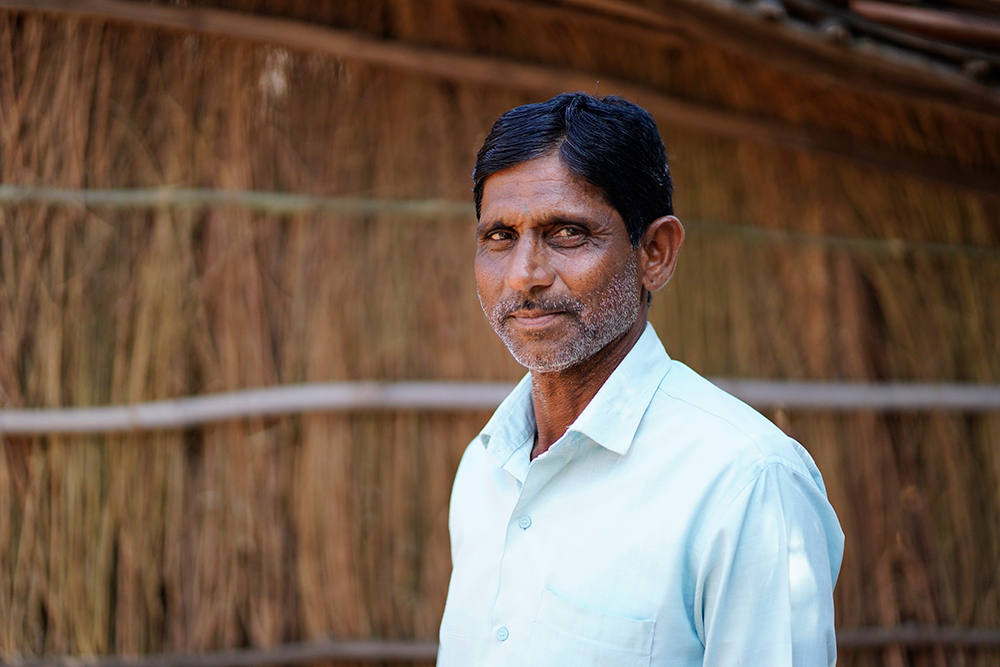
This clip is the listing of traditional varieties of fish in the river Narmada before it turned into a reservoir of stagnant water due to the building of the massive Sardar Sarovar Dam.
